BLOOD AND WATER:
A South African Flag
EVERYONE CAN RELATE TO LOSING SOMEONE, LERATO RECAPS AN SA TEEN DRAMA

A young girl lying on her bed spreads herself across the screen of my sister’s android – which is what I’m using to watch this – in upside-down fashion. I pause it and try to turn it the right way up manually, because my brain has decided to forget the common laws of gravitational force. Of course it doesn’t work – automatic screen-adjust, anyone? Thankfully, my sister sees me and laughs, but now I absolutely have to turn the girl in the screen the right-side up, because my sister laughed at me and sometimes I’m petty.
It works. I’m satisfied.
Press play.
The girl sighs, languidly rolling herself up into a seated position with the camera following suit. Distress is painfully etched into her young face. Her shoulders are tense. She anxiously grips the comforter that is an untidy mass of lumps across her bed. The camera treats us to brief shots of the paraphernalia of her life that is littered across her bedroom while the show’s theme song drops the beat – and it sounds like gritty hip-hop, the good kind.
And then, a brief knock on the door.
“Sis?” the voice on the other side asks.
“Ng’yeza.”
Which is a colloquially pronounced version of the Zulu word “Ngiyeza” and at this point, one can already intuit that this is going to be a very culturally diverse show – and I love it.

Puleng in her room
After an intermittent visual of Cape Town suburbia overlooked by a hulking Table Mountain, which, as of 2011, now enjoys the reputation of being one of the seven wonders of the world, we are transported into what is, perhaps the saddest and most morbid birthday party we have ever been forced to participate in implicity by viewership status, and to our consternation, Puleng’s distress (the main character of the story who greeted us in the opening scene) becomes a shared experience. It is at this birthday party that the core drive of the series is revealed: the protagonist’s mother, Thandeka Khumalo lost her daughter after she gave birth to her. No, she didn’t die, though that might have been an easier pain to carry due to the finality of death, but no. Instead, her child was snatched from the hospital by a powerful child-trafficking ring. To make matters worse, Puleng’s uBaba (Zulu word for ‘father’) is suspected to have sold his daughter to these child-snatchers and has been undergoing investigation for years. His children still adore him, but the strain on the relationship with his wife is visible: she can’t even pretend to hold his hand and he isn’t even allowed to stay an hour.

The family at Phumelele’s birthday party
Oh, about the morbidity levels: this isn’t some private, family memorial with just the family in attendance. No. It’s worse than that – the event is held like an actual birthday party, with outside people and everything who have come to eat the cake! It’s depressing. And the cameraman cleverly avoids showing their faces, because none of these people probably matter; none of them are the people that Phumelele (her kidnapped daughter) would have invited.
Speaking of birthday parties, Puleng leaves the miserable shindig (escaping through her bedroom window, no less) after a fight with her mom, and takes off with her gregarious bestie, Zama who blows into the story bedecked with multi-coloured Sho Madjozi-esque braids, dressed in the South African version of a harajuku fashion sense (minus the dark themes it expresses in Japan) – and a chauffeur sent to pick her up by her new beau, Chris. They are going to a real birthday party – or thee birthday party? Enter Puleng’s ‘Fik-sation’ in the form of Fikile Bhele, and spoiler – it’s her. I know it at this point. My sister knows it. You know it. We all know it.
Capeesh.
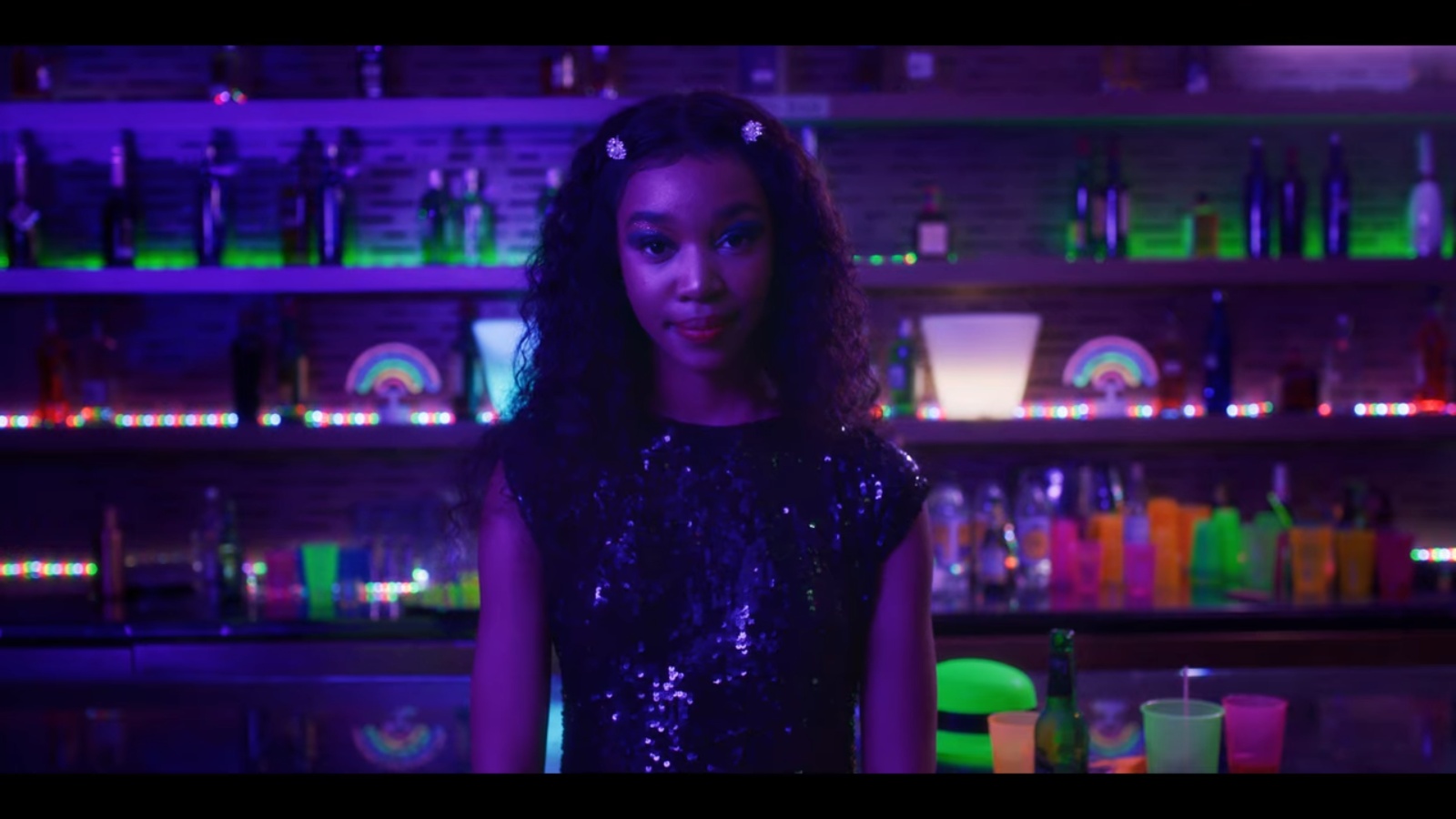
Not that the show says anything about it being her, but sometimes you get that “feeling”, and so does Puleng. She zeroes in on Fikile, who lives a very lavish lifestyle cluttered with easy access to drugs, alcohol, and one of the best private schools money can buy on the coast, Parkhurst High.
Enter Parkhurst High – with Puleng, after a slew of unfortunate events and a favour from a very noble, sincere and lovable character (Wade, you’ll meet him), and the rest of the story focuses largely on how Puleng goes about proving – or disproving – that Fikile, “Fiks” to her inner circle of friends (including us, her inner circle of dedicated viewers), is her kidnapped sister.
The story’s origins are a chilling reminder of child trafficking, which is an issue that the whole world is battling with, and I’d dare to venture that the series is loosely based on the story of Zephany Nurse, also known as Miche Solomons. She, too, was stolen from a hospital in Cape Town, and an ordinary selfie that she took, unaware that she was taking it with her younger sister (who had also started attending the same school) led to her discovery seventeen years later.
Although Nurse’s younger sister wasn’t actively stalking her in order to verify her identity, Puleng was, and while the story-telling does take liberties with making some unnecessary leaps in order to push it’s plotline, it accomplishes several things – and characters, quite well.

Pulengs’ mother and a baby picture of Phumelele (her kidnapped daughter)
Cue in Wendy, President of the Magazine Society and daughter of the Minister of Arts and culture. We’re humbly (ahem) introduced to the out-spoken teen in history class, where she expresses the lack of more relevant African history in the curriculum, an issue which countless South Africans bemoan. And rightly so. Expositions of history are often tied to identity, especially when one delves into the archives of colonisation and the systematic practices employed in the erasure of ethnic identities, from legally sanctioning spiritual practices, to demonising the physical appearances of the oppressed peoples. Much of African history is largely ambivalent when it comes to the establishment of African identities prior to European interference; much of it remains as dark as the continent was perceived to be prior to the ironic twist of fate when the Greeks discovered it as “the land that is free from cold and horror”, or the Romanic variation of “land of sun” or “sunny”, which is the literal meaning of the term “Africa”.

Wendy in her Parkhurst High uniform
Apart from the naming of our beloved continent denoting the European experience of Africa (or Alkebulan, the alleged original nomer), Wendy’s character partakes in political espionage à la style de le république: her best friend, Tahira, (whose sweet and sincere character we loved) is butting heads with Fiks in the battle for Head Girl, and Wendy doesn’t hesitate in stooping as low as the irreverent politicians of modern-day democracy in order to ensure her best friend’s win. How does she do it? Watch the series, darlings, but in summary, she runs a classic smear-campaign that only intensifies when a steamy scandal is released to the ever-dramatic public eye. In the midst of all this are the Head Girl speeches, and while Fikile’s speech is fair (to be embarrassingly honest, I don’t remember the half of it), it was completely outshone by Tahira’s ‘uniform’ speech – uniform as in the noun.
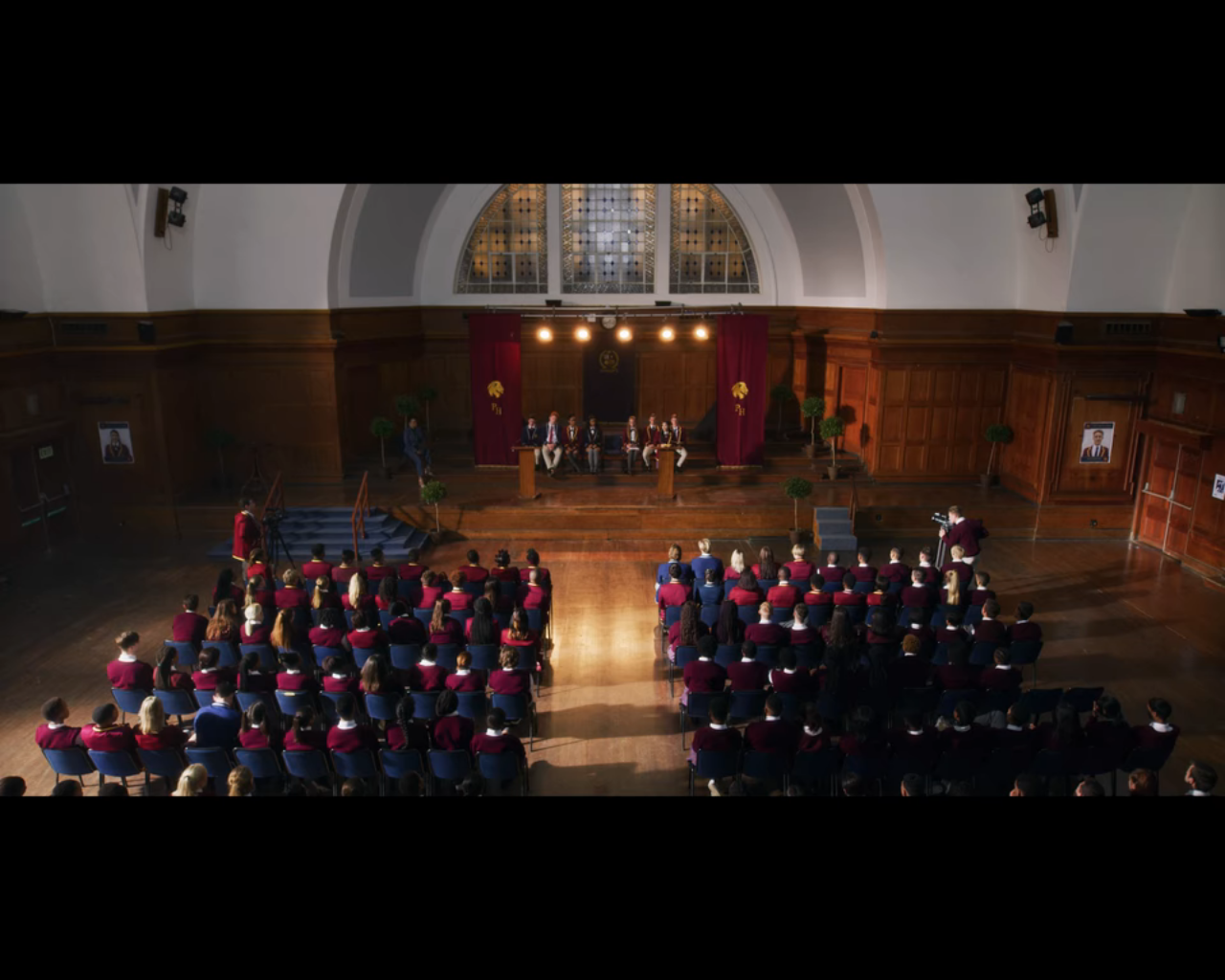
An Assembly at Parkhurst High
Uniform is a double-edged sword that both unites and divides, as Tahira so poignantly illustrated. The unification? It gives students a sense of belonging, a sense of pride; most times, people don’t know how rich or how poor you are when you’re all wearing uniform, and it makes it a bit easier to feel equal to everyone, until you get well-acquainted with the details of their lives and them with yours. Beyond that, however, uniform ensures that people aren’t forced to compete with fashion and style on school grounds, which is an economically isolating experience that is somewhat only relegated to the odd casual day that is practised by most South African schools. The division? It is this very disguise that offers a deceptive and uncomfortable camouflage: poor students whose situation is their daily, living fact go unrecognised, teachers are not motivated to help, and students assume that your status is the same as theirs – often times, with the students who are better off, or pretending to be, sneering at those who can barely afford their tuition. In this way, uniform becomes a grey-wall façade, a tool of oppression, with both students and teachers being woefully untrained to look beyond it. The matter is agonisingly worsened by the fact that uniforms have become expensive, going hand-in-glove with the status of the school. Teachers have become unforgiving towards students who cannot afford the uniform; many of them being guilty of sending students home as punishment for not being dressed in full uniform. It is appalling, and while the series doesn’t discuss the problems of uniform at length, we do see Thandeka announcing to her daughter that she has taken out a loan to afford her school fees two or three episodes after she’d declared that she has no idea how she will afford it.
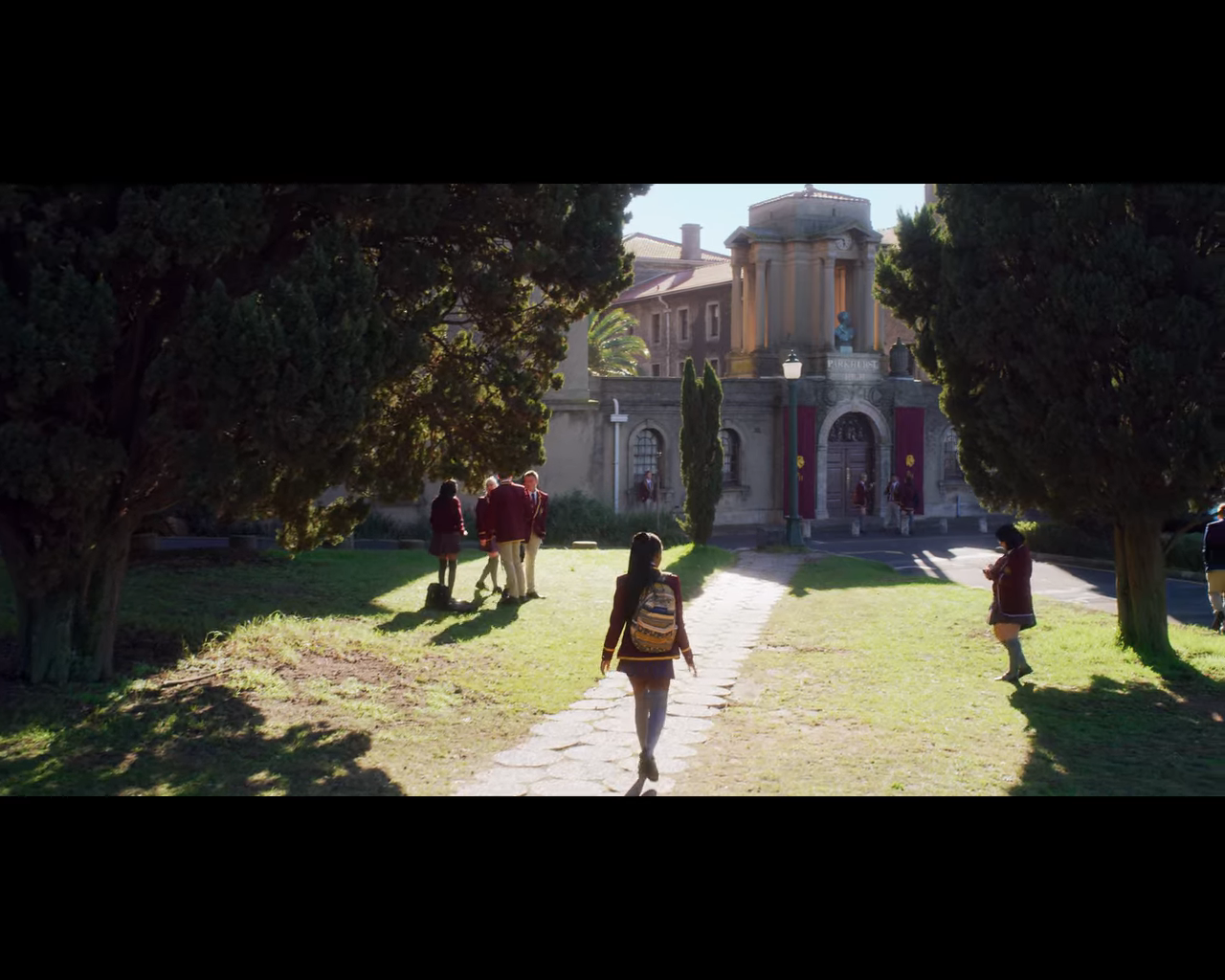
Puleng entering Parkhurst High for the first time
In re of clothing, we loved how the series clearly conveyed the characters through the expression of fashion and style. From Zama’s colourful supernova to KB’s cool, relaxed hip-hop meets Avril Lavigne’s ‘Skater-boy’ style, there was a lot to pay attention to – by way of taking notes, even. It was enjoyable to see. Puleng’s clothes fit her middle class lifestyle and her demure, poised persona; while Reece (who, like KB, is one of Fiks’ closest friends), who channelled her inner scream-demon through short skirts and messy hairdos, is the epitome of what our parents seem to think teenagers are, and the best part? She doesn’t care. Not to conservative society, anyways, because teenagers have a myriad of things that they care about (and some of them, they honestly shouldn’t care about), like drugs, sex, alcohol and love. Zama’s ‘Chrissues’ offer a hilarious, and sometimes interesting stark contrast to the doomed relationship that Fiks finds herself in, and which sees Fiks tearing up her room to Sho Madjozi’s ‘John Cena’ track at that intense part of the song that goes, “Di-di-di-di. Di. Di. Di. Haaaiiiboooo!” And, as we neatly side-step another major spoiler, we’ll take this opportunity to comment on Fiks’ clothing choices, instead: the girl dresses like a fashion model, with garments that she wears like an effortless after-thought and a pair of glittery gold cat-eyes on her birthday party paired with a sparkly get-me-bodied little black dress, no less – jealous, anyone?
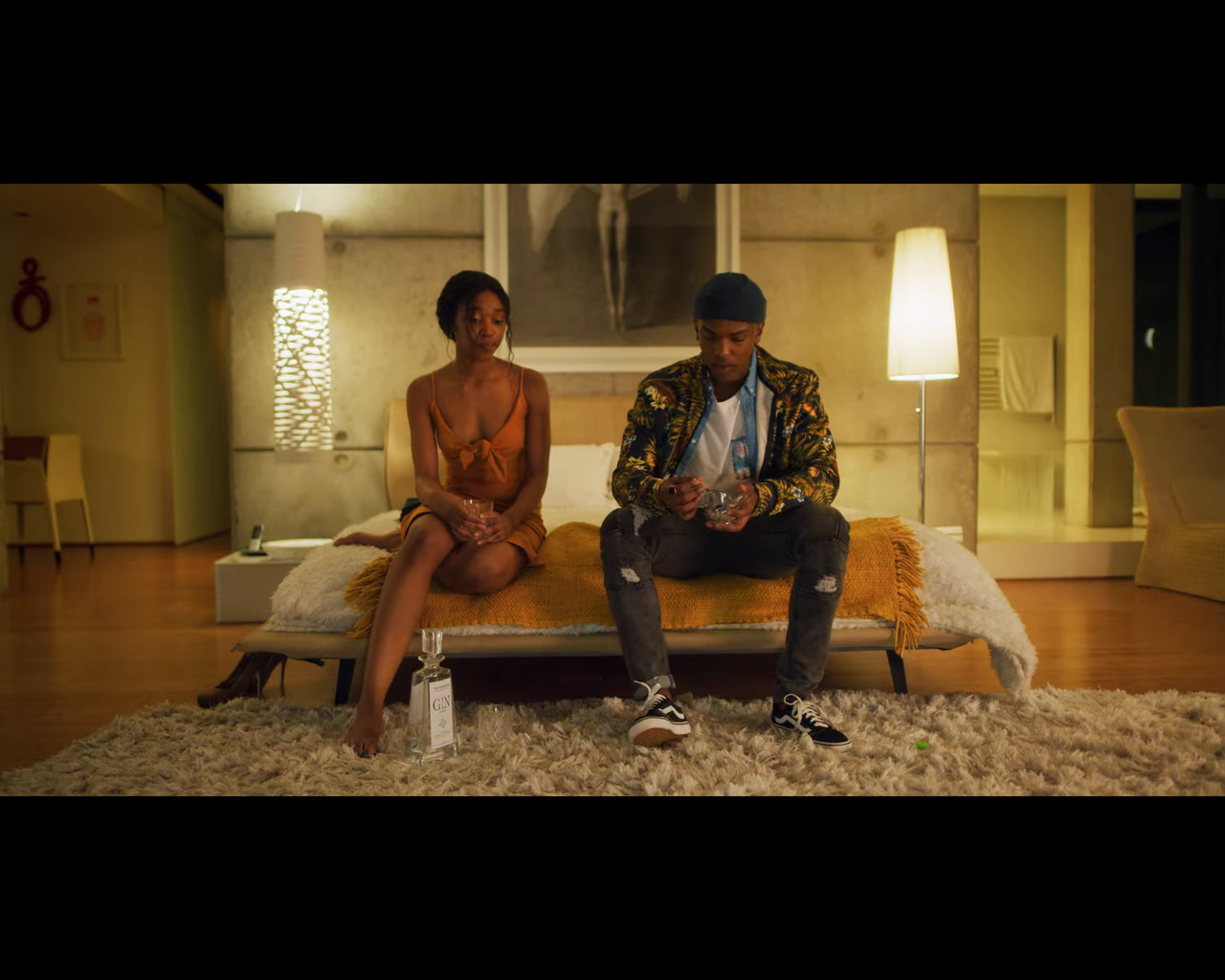
Fikile and KB
Overall, the series was beautifully shot. A lot of the editing style reminded me of Euphoria, but to be fair that’s also another teen drama series (worth the watch and it has lots of sparkly-eyes) and watching one of these will typically remind you of a whole lot of other teen drama series. Comparisons aside, a lot of the beauty in this show is owed to the impressive, sprawling metropolis that is Cape Town. The city is often cited in those top ten places to visit in the world, and rightly so –
It. Is. Stunning.
And it affords the perfect backdrop for a fresh, teen series that, instead of a number of artistic scores, relatably uses the music of the country’s youth – the soulful expressionism of House, the intense beats of Gqom (@ShoMadjozi), and the cool-as-a-cat rhythms and lyrics of South African hip-hop (@NastyC), to express the emotions and experiences that the youngsters in the series – and in the South African diaspora – go through at what will forever be a memorable experience at the dusks of their childhoods.
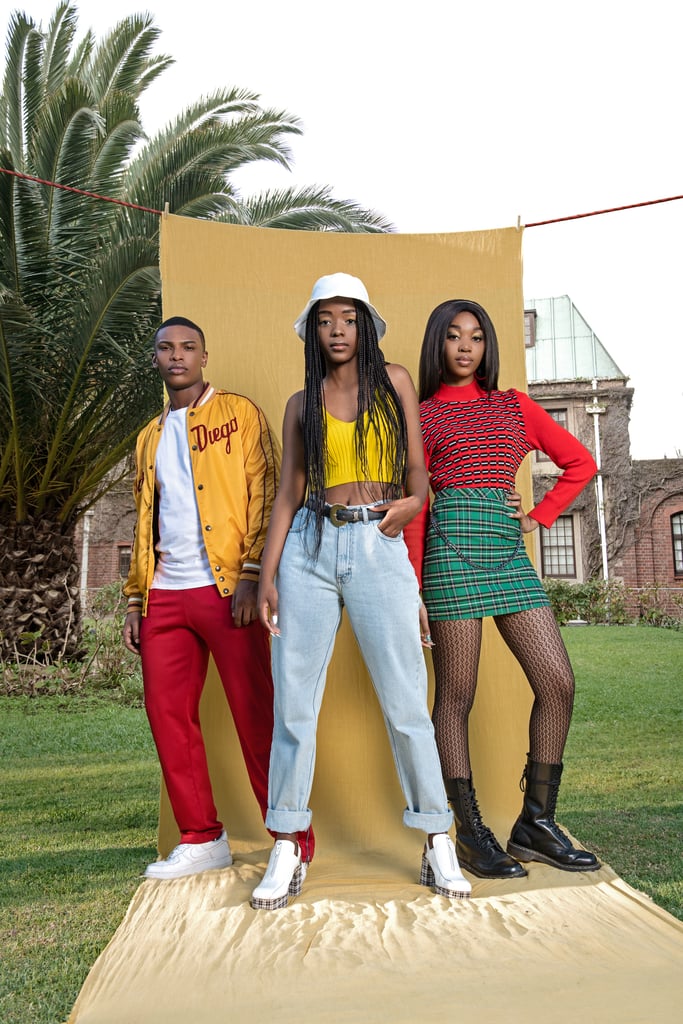
Thabang Molaba, Ama Qamata, Khosi Ngema
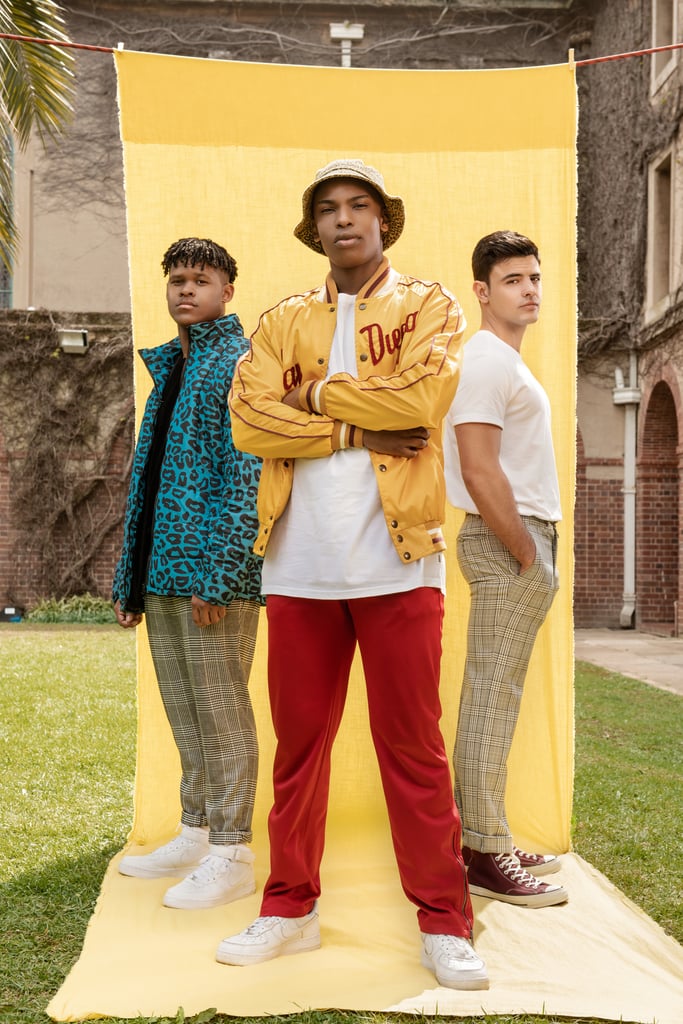
Dillon Windvogel, Thabang Molaba, Arno Greeff
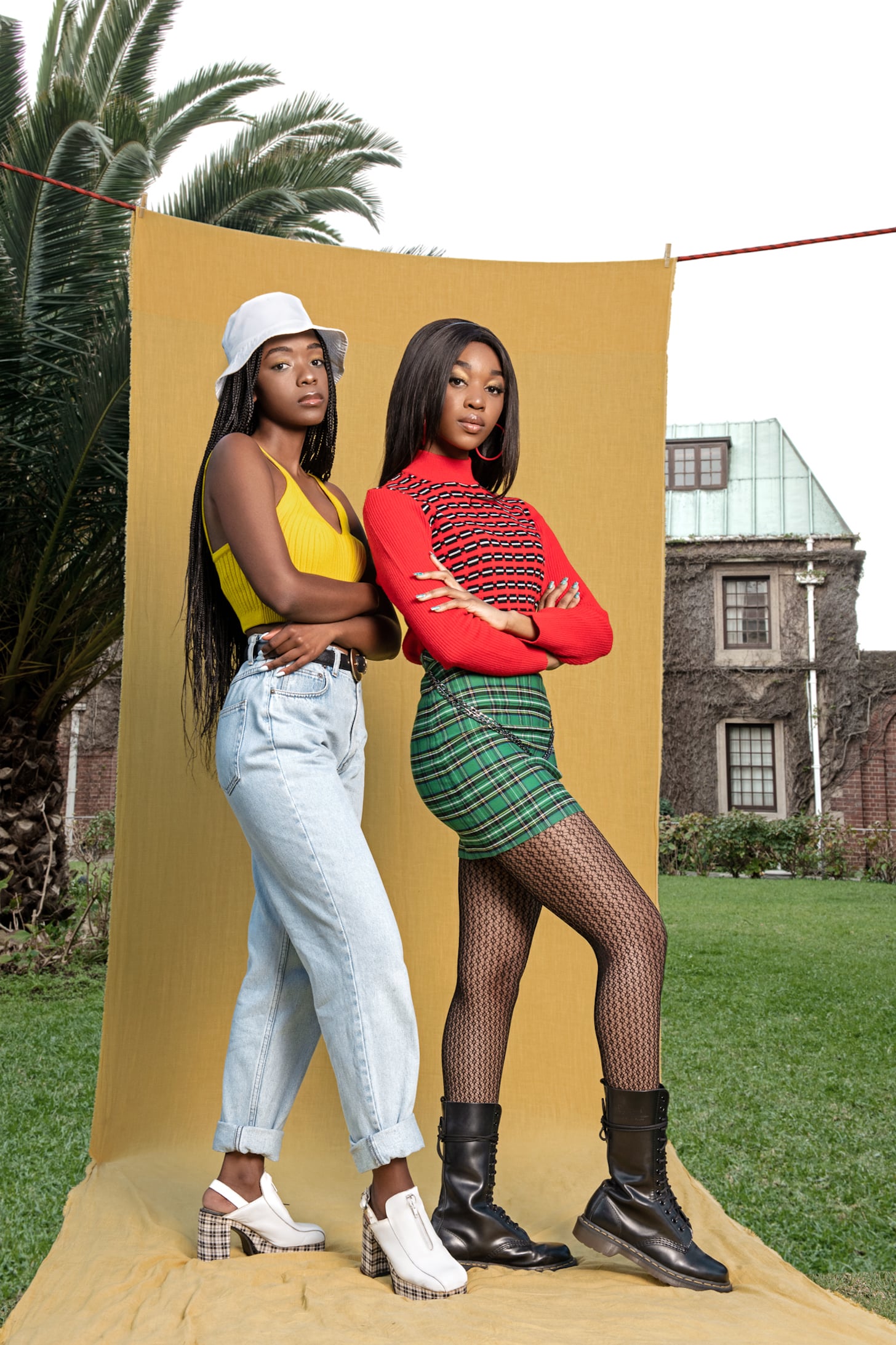
Ama Qamata and Khosi Ngema
Lerato Ramodike is a Pretoria based writer, she’s a novelist, short story writer and visual artist.


